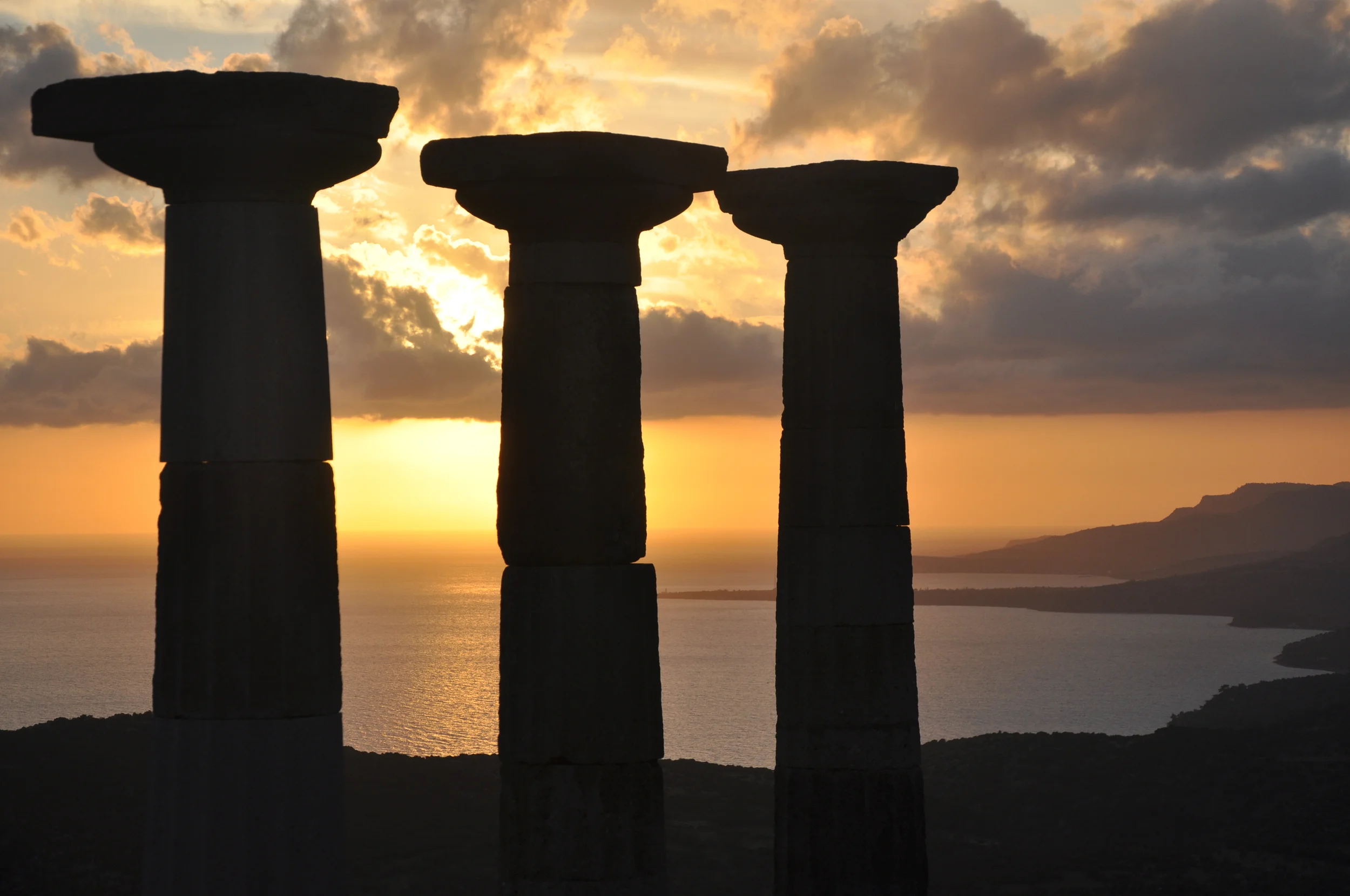Archaeological travel
Travel
Much of my inspiration as an archaeologist has come from travel, which I consider to be as important part of my fieldwork as excavation. A formative experience for me was an undergraduate study tour I undertook as part of my degree course in which I examined early acropolis sites, allowing me to travel extensively in Sicily, Italy, Greece and especially Crete, where I explored many lesser-known sites; another in 1984 after I graduated was a three-month tour in Turkey on a grant from the British Institute of Archaeology at Ankara, allowing me to visit the sites of the Aegean coast and also to go as far east as the Soviet border and the Kurdish south-east, to remote places which a few months later were cut off by war. These experiences, looking at sites of all periods and types, helped me to see archaeological remains in a wide historical and geographical context, and shaped the way I’ve approached archaeological travel in subsequent years both in the Mediterranean region and elsewhere in the world.
Some of the travel highlights for me since then have included being in Jerusalem in the days leading up to the first Gulf War, when I had what must be the virtually unique experience of being alone in the Holy Sepulchre, and in North Africa exploring the edge of the Sahara looking for Roman frontier sites. In Italy I’ve spent much time in Rome and among the sites of Campania, and in Greece in Athens and the Mycenaean Argolid, all of which have featured in my novels. Further afield, I’ve gone beyond the old Soviet border where I was halted in eastern Turkey in 1984 and visited Georgia and Kyrgyzstan, where I explored the petroglyph sites on the Silk Route beside Lake Issyk-Gul – a few years later to appear in my novel The Tiger Warrior. I’ve followed the route of Captain Cook along the Great Barrier Reef in Australia, and come ashore at the spot where he was killed in Hawaii. In the Americas, I’ve been as far north as the remains of Franklin’s expedition on Beechey Island in the Arctic, west to the sites of Haida Gwaii in British Columbia and east to the Viking settlement of L’Anse aux Meadows in Newfoundland; I've also travelled south to the Mayan sites of the Yucatan and to the very tip of South America at Tierra del Fuego, tracing the route of Charles Darwin and HMS Beagle through the Strait of Magellan.
Much inspiration comes from closer to home as well. In England I look out from the medieval timbers of my study towards a castle that was first built more than a thousand years ago, by an Anglo-Saxon king. Among the best places I find for contemplating the past are the prehistoric barrows, hillforts and stone circles that make Britain one of the richest archeological landscapes to visit. In Canada I’m fascinated by the archaeology of early European contact, from the first settlements through to sites of the fur trade and colonial war, to the time of the English and Scottish settlers who first cleared the land on the farm where I write and built the log house and barn that still stand today, for me as rich in historical meaning as a castle in England. Many of my experiences of archaeological travel both near and far have figured in my novels; those who’ve read my books might be able to spot areas not yet featured in my fiction where future adventures could lie!
I took the photo in the banner through the columns of the temple at Assos in Turkey, overlooking the Aegean Sea. Visit my blog for images and accounts of sites I've visited around the world, to be added as I expand the 'facts behind the fiction' sections for my backlist of novels.
